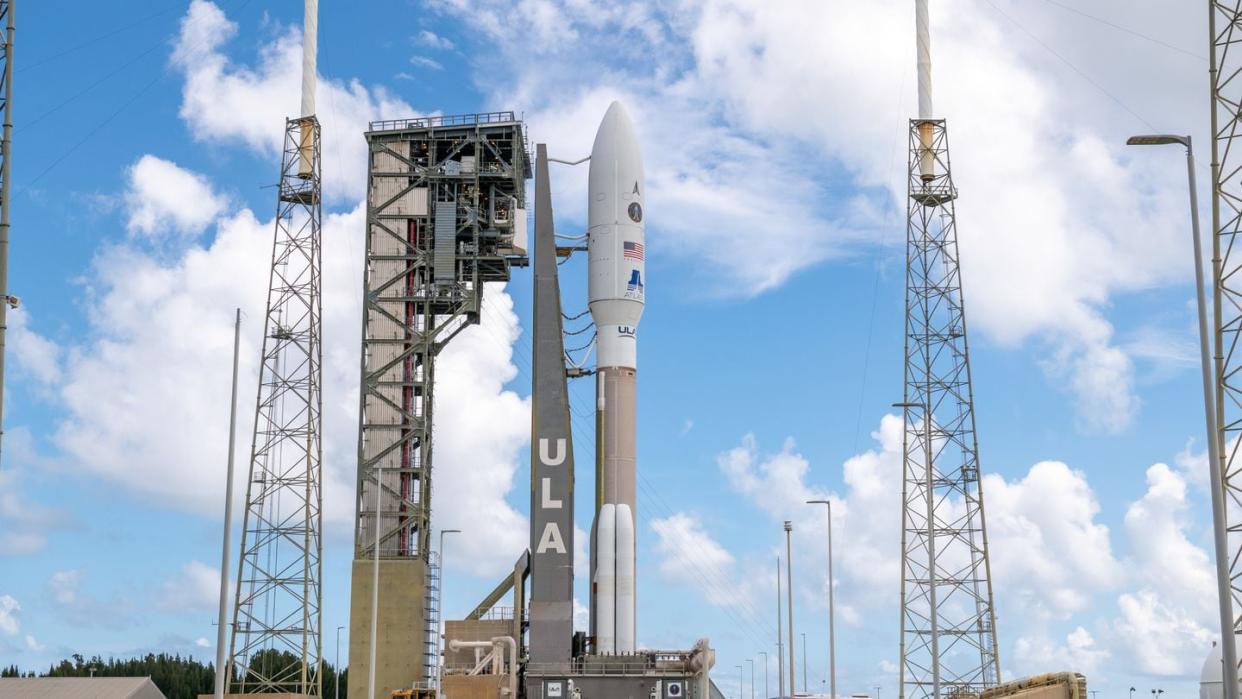Defining Dynamic Space Ops: What it means to stay dominant in orbit

For the U.S. to remain dominant in space, it must be able to sustain dynamic operations on a scale we never thought necessary. The U.S. Space Force understands that and has started positioning itself appropriately, initiating the technologic and cultural shifts necessary to enable this leap.
In a December 2023 paper for Aether: A Journal of Strategic Airpower and Spacepower, former U.S. Space Command Deputy Commander Lt. Gen. John Shaw posited that the U.S. must build a dynamic and dominant force specifically for future military space operations.
“The paradigm of positional space operations must be replaced by a paradigm of dynamic space operations, where spaceborne combat forces are no longer static and predictable,” Shaw said in the paper.
While the paper lays out the importance of maneuver to dynamic space operations, or DSO, that concept alone isn’t sufficient to address demands of orbital warfare. The Space Force must take a more expansive view of DSO to include several other principles of warfare — starting with concentration of force and flexibility — in order to protect U.S. interests and achieve military objectives in space.
Putting a finer point on DSO
As our adversaries posture to make space the next battleground, agencies including the Space Force will play a pivotal role in defining how dynamic U.S. operations become. But what does DSO really mean for this scenario?
Put simply, DSO gives spacecraft the ability to move from a static role to one where they can act in real time to defeat any threats, assure combat effectiveness, or provide alerts about any anomalies outside of their regular mission.
This happens through three main capabilities:
Concentration — The ability to distribute or centralize military effects at the right place, at the right time, and in such a way as to achieve a decisive result. Given the expansiveness of space, DSO will not have the ability to mass forces of traditional battlespaces. As such DSO will require the ability to take inventory of those assets that might support a desired and decisive result, in turn orchestrating them in some form of concentration that drives the intended military objective. These could be assets near and far with multiple capabilities and effects coming together to achieve a clearly defined objective.
Flexibility — The capacity to adapt plans and operations to account for unforeseen circumstances, ensuring success in the face of “fog and friction”. DSO will need to consider multiple options and generate potential courses of action in near real time to properly preserve freedom of action in space. Given adversarial action in the space domain is likely to be the precursor to any peer conflict, being able to quickly switch gears from peace time cat-and-mouse operations to full orbital warfare will be necessary. The success of being able to do so will likely act as a key deterrent and inhibitor to escalating adversarial action.
Maneuver — Giving satellites the mobility within or between orbits to evade threats or position near objects the U.S. may want to observe more closely. As Shaw suggested, Guardians will need to master the manipulation of energy, orbit, and angular momentum over time to move space assets into superior and enabling positions. This includes but is not limited to avoiding threats or projecting ISR capability. It becomes a key enabler to the concentration as well as flexibility principles.
These capabilities required to apply these principles to operations are important across the space domain, from being able to better collect information during specific missions to outfoxing a potential enemy satellite or weapons system.
Transitioning to DSO
The move to a broader definition and implementation of DSO can only occur by continuing to mature application of the principles of warfare to space operations. Using broadscale on-orbit experimentation will create the greatest and most rapid progress.
Taking such a course would greatly enhance our expectations of orbital warfare and strengthen education, training and exercises as well as the development of our tactics, techniques and procedures. Additionally, it would have the added benefit of triggering other countries’ SOSI systems and unique characteristics of their on-orbit behavior.
Implementation of such a strategy will require a conscious decision by Space Force leadership towards greater integration of the space acquisitions and operations communities. Together these two groups must rapidly iterate on technologies, system designs, and operational deployments.
Initial focus should target the key underlying capabilities inherent to the theory, including:
— On-orbit propulsion;
— Autonomous mission management and command and control;
— Advanced processing at the edge;
— Hi-fidelity on-orbit threat characterization, identification, and warning; and
— Precision guidance and navigation.
A second tier of capabilities will become more important over time, including on-orbit servicing and maintenance, and autonomous rendezvous and proximity operations.
Technologies like AI/ML and advanced processing will ultimately play critical roles in solving some of these challenges outlined above but are not necessary to capability deployment today. The Space Force and other defense agencies are taking steps in this direction with advanced algorithms and human-machine interfaces, but partners in the private sector have been maturing these capabilities to make sure they are reliable, affordable, effective and ready for use now.
By moving out to implement within Space Force practices and leaning on industry innovation, the U.S. can begin to implement and iterate today on those with a wider view of DSO, incorporating the key principles of warfare to military space operations without having to wait a decade.
Josh Hartman is Chief Strategy and Growth Officer of LightRidge Solutions and is the former Deputy Assistant Secretary of Defense for Space and Intelligence.
This story has been corrected remove an extraneous word from Lt. Gen. John Shaw’s title in the second paragraph.

